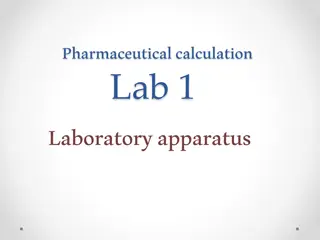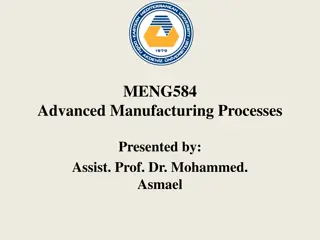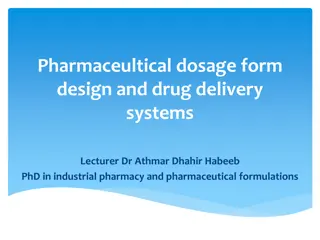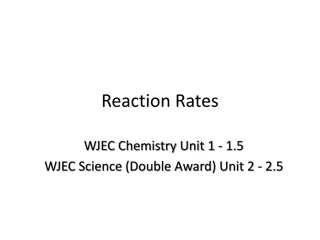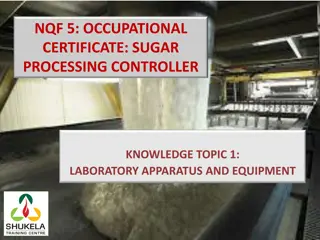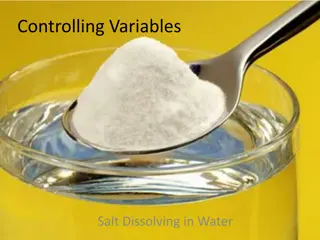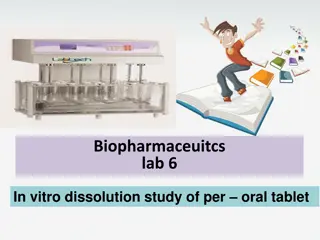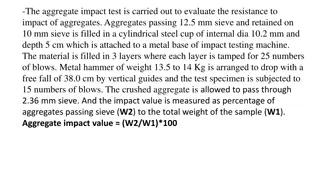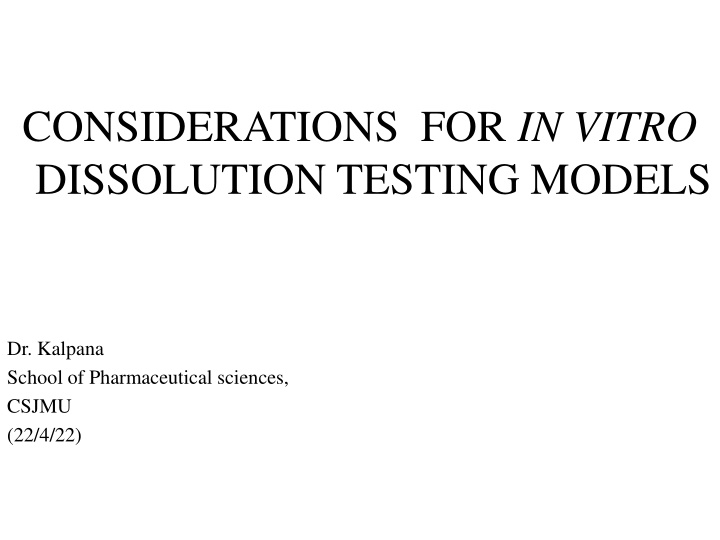
Considerations for In Vitro Dissolution Testing Models in Pharmaceutical Sciences
Explore the advantages of dissolution testing in determining drug release and absorption rates, ensuring product quality, and aiding in regulatory processes. Learn about the factors to consider in designing dissolution tests, including apparatus, fluid, and process parameters. Discover the different categories of dissolution apparatus and the importance of automation in testing procedures.
Download Presentation

Please find below an Image/Link to download the presentation.
The content on the website is provided AS IS for your information and personal use only. It may not be sold, licensed, or shared on other websites without obtaining consent from the author. If you encounter any issues during the download, it is possible that the publisher has removed the file from their server.
You are allowed to download the files provided on this website for personal or commercial use, subject to the condition that they are used lawfully. All files are the property of their respective owners.
The content on the website is provided AS IS for your information and personal use only. It may not be sold, licensed, or shared on other websites without obtaining consent from the author.
E N D
Presentation Transcript
CONSIDERATIONS FOR IN VITRO DISSOLUTION TESTING MODELS Dr. Kalpana School of Pharmaceutical sciences, CSJMU (22/4/22)
Advantages of dissolution testing: The major advantage of dissolution testing is that the rate of release and the extent of absorption of a drug is determined by the dissolution of the dosage form. The dissolution test apparatus is robust and simple to use, requiring no specialist to handle. It is well standardized and sufficiently flexible to allow perform testing for a broad range of oral solid dosage forms. Dissolution testing is used to determine the quality of pharmaceutical products (tablets/capsules) based on the characteristics of in vitro release of the products. Dissolution testing is used to establish the quality of pharmaceutical products, mostly tablets and capsules, based on the in vitro drug release characteristics of these products. Dissolution testing of solid dosage forms plays a significant role in the decision- making process from a regulatory perspective, mainly in the development and approval of generic medicines, where it is possible to avoid unnecessary human studies without compromising the quality of pharmaceutical products. The pharmaceutical manufacturer takes advantage of dissolution testing by using it to assess product development, product stability, quality control, and quality assurance, and to establish in-vitro-in-vivo correlation. The dissolution apparatus can be easily automated which is important for routine investigations.
Dissolution is a process in which a solid substance solubilizes in a given solvent i.e. mass transfer from the solid surface to the liquid phase. Rate of dissolution is the amount of drug substance that goes in solution per unit time under standardized conditions of liquid/solid interface, temperature and solvent composition. Factors to be considered while designing of a dissolution test 1. Factors relating to the dissolution apparatus 2. Factors relating to the dissolution fluid 3. Process Parameters
1. Factors relating to the dissolution apparatus Design of the container Size of the container Shape of the container Nature of agitation Speed of agitation Performance precision of the apparatus
FACTORS RELATING TO THE DISSOLUTION FLUID Volume Temperature Deaeration of dissolution medium pH PROCESS PARAMETERS: Method of introduction of dosage form Sampling Techniques Changing the dissolution fluid
There are basically three general categories of dissolution apparatus : 1. Closed-compartment apparatus 2. Open-compartment (continuous flow-through) apparatus 3. Dialysis systems Closed-compartment apparatus : Limited volume apparatus operating under nonsink conditions.
OPEN FLOW-THROUGH COMPARTMENT SYSTEM The dosage form is contained in a small vertical glass column with built in filter through which a continuous flow of the dissolution medium is circulated upward at a specific rate from an outside reservoir using a peristaltic or centrifugal pump. Dissolution fluid is collected in a separate reservoir. E.g. lipid filled soft Gelatin capsule
ADVANTAGES No stirring and drug particles homogeneous, laminar flow that controlled. All the problems of are exposed to can be precisely wobbling, shaft eccentricity, vibration, stirrer position don t exist. There is no physical abrasion of solids. Perfect sink conditions can be maintained
DISADVANTAGES Tendency of the filter to clog because of the unidirectional flow. Different types of pumps, such as centrifugal, have been shown to peristaltic and give different dissolution results. Temperature control is also much more difficult to achieve in column type flow through system than in the conventional stirred vessel type.
DIALYSIS SYSTEM Here, dialysis membrane used as a selective barrier between fresh solvent compartment and the cell compartment containing dosage form. It can be used in case of very poorly soluble drugs and dosage form such as ointments, creams and suspensions.

